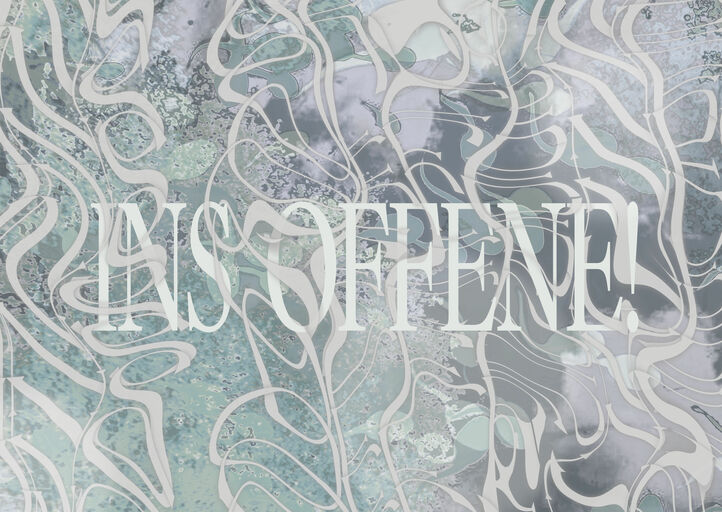- Exhibition
- Awards
- Library
- Speech
- edition KHM
- Festival / Award ceremony
- FG exMedia
- FG Film und TV
- FG Kunst
- FG Kunst- und Medienwissenschaften
- Movie screening
- Glasmoog Books
- Glasmoog - Raum für Kunst und Diskurs
- KHM Journal
- Concert
- Cooperation
- LAB Jahrbuch
- LECTURE Reihe
- Teachers elsewhere
- literature
- off topic
- News articles
- Publications
- Job offers
- Study
- TV broadcast
- Event
- all
Into the Open! Multispecies Narratives

In cooperation with the Museum Morsbroich in Leverkusen, the exhibition shows works by students of the seminar “Multispecies Storytelling” by professors Hörner/Antlfinger and artistic-scientific assistant Pascal Marcel Dreier.
Im Rahmen der Morsbroicher Kunsttage
Gustav-Heinemann-Str. 80, 51377 Leverkusen
Ausstellungsdauer: bis 28. September 2025
The exhibition will open on 17 May at 4 pm as part of the Morsbroich Art Days (16 – 18 May 2025) and runs until 28th of Sepetember.
Featuring works by Blanca Barbat, Corinna J. Duschl, erinleehong, Johannes Hoffmann, Lisa James, Duhyoung Kim, Jiwoo Kim, Hyunju Lee, miguel marañas, Jennifer de Negri, Yuna-Lee Pfau, Hyunji Seo, Aiden Vetter, Amelie Vierbuchen and Claude Wear.
We sneak into the interstices of the anthropological machine and nest in there! The lock is open!
The exhibition Into the Open! Multispecies Narratives presents installations, video and sound works, sculptures and performances by students of the Multispecies Storytelling Seminar, Profs. Hörner/Antlfinger and Pascal Marcel Dreier, at the Academy of Media Arts Cologne.
The philosopher Giorgio Agamben describes the anthropological machine in his work “The Open. Man and the Animal” (2003) as a thought structure that separates humans from animals – whether by inclusion or exclusion. This machine produces what is deemed “human” by constantly drawing a border and placing certain beings inside or outside this category. In the open, on the other hand, beings can become indistinguishable from one another; at the same time, it is a place of possibilities from which the interstices of the anthropological machine can be infiltrated and where lush ecosystems are formed.
The Museum Morsbroich, founded in 1951 as a venue for contemporary art in a baroque castle complex, has a long history as a hunting lodge and seat of a knightly order, among other things. There are many such in-between spaces here. The exhibition presents them with cross-species stories of animals, fungi, plants, bots and landscapes that have infested and colonised them.
Here we are entertained; we listen to stories from parasites, scroungers and mutants whose worlds have long been in decay and which can tell us about survival in polluted and troubled environments. Mistletoe children use the props of the castle to tell us about their criminal lifestyle, which appropriates the resources of those rooted in the ground. Albatrosses mourn their mates who have starved to death from the rubbish left behind by the machine. Human fish find pleasure in glitching between animal and human bodies. A snail occupies corridors and a stairwell in the castle and wets cleaned surfaces with its slime. A dog wants a name, hamster aesthetics spread.
- Exhibition
- Awards
- Library
- Speech
- edition KHM
- Festival / Award ceremony
- FG exMedia
- FG Film und TV
- FG Kunst
- FG Kunst- und Medienwissenschaften
- Movie screening
- Glasmoog Books
- Glasmoog - Raum für Kunst und Diskurs
- KHM Journal
- Concert
- Cooperation
- LAB Jahrbuch
- LECTURE Reihe
- Teachers elsewhere
- literature
- off topic
- News articles
- Publications
- Job offers
- Study
- TV broadcast
- Event
- all


































